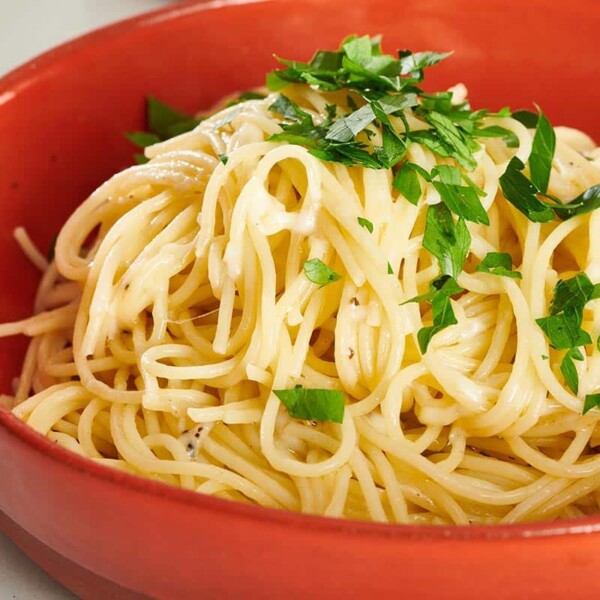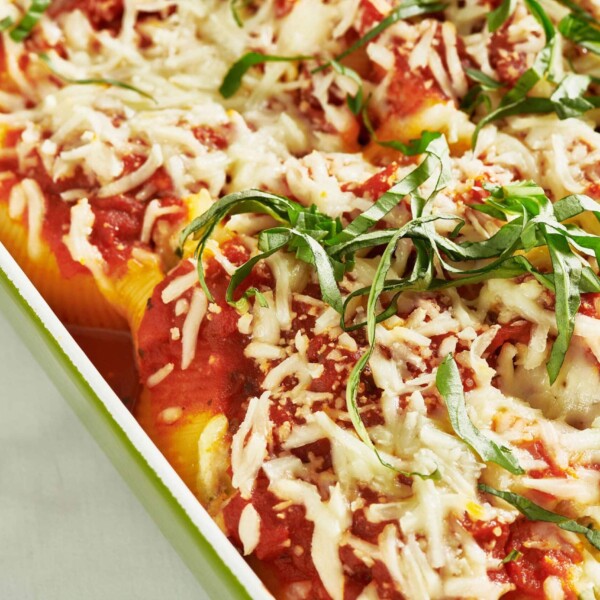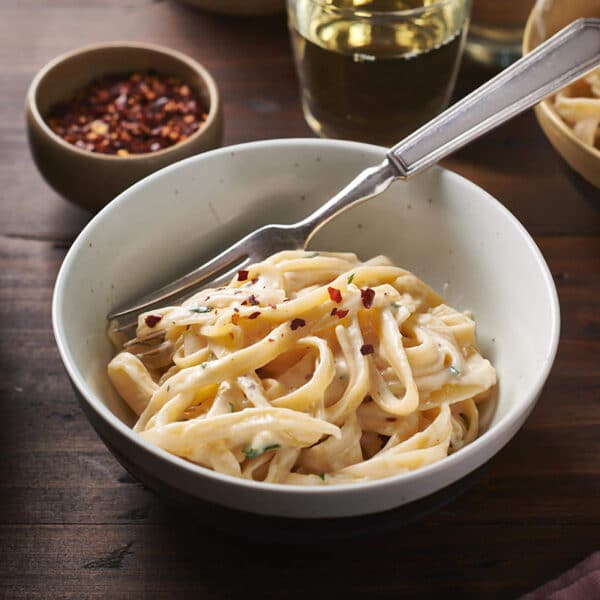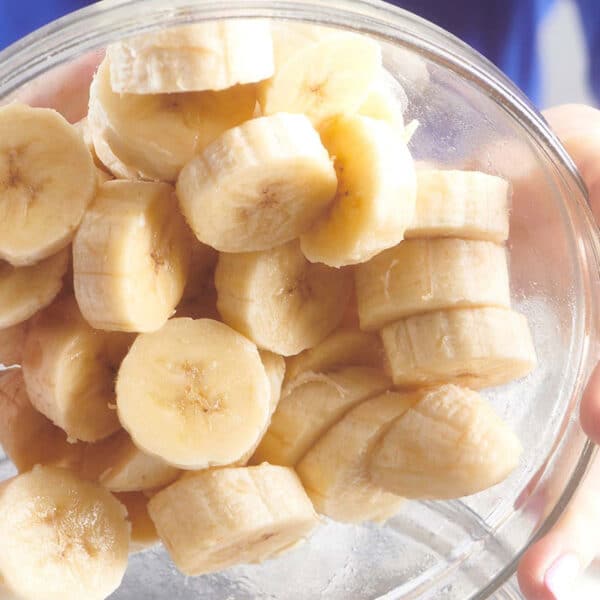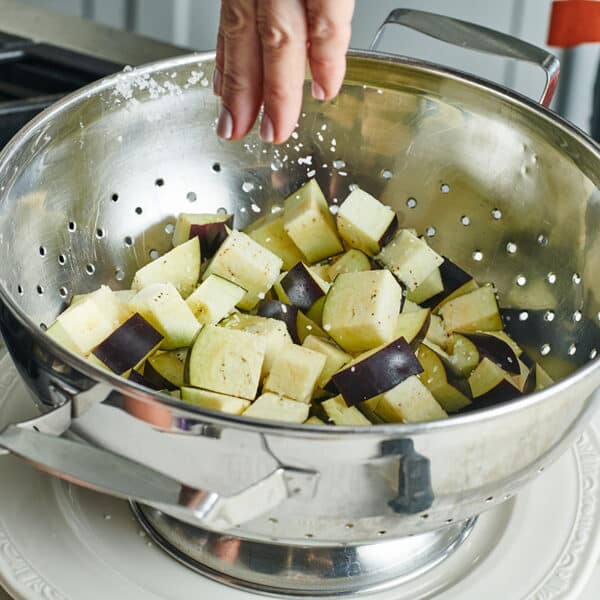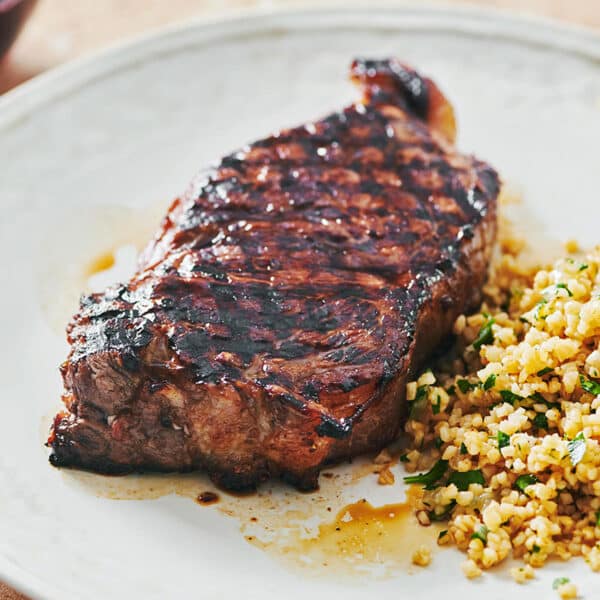How to Cook Pasta
Updated Oct 24, 2024
This post may contain affiliate links. Please read our disclosure policy.
Everything you need to know to make perfect pasta every time.
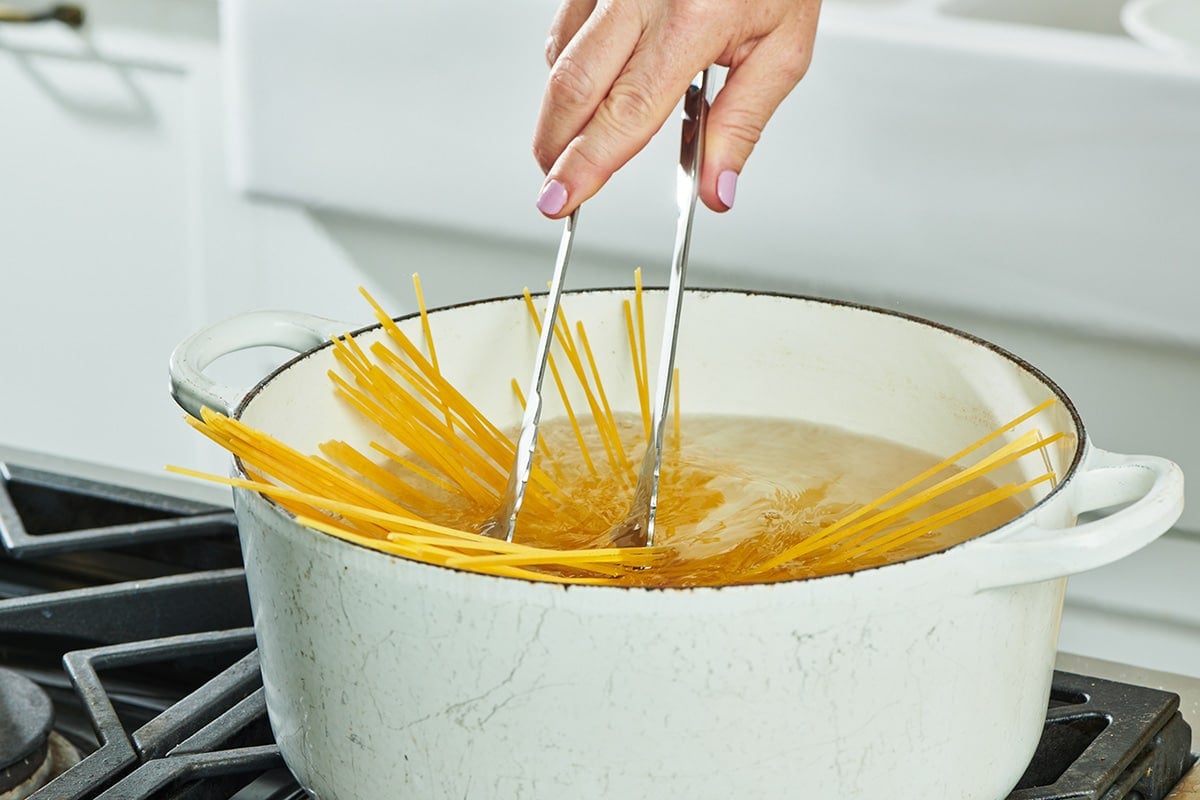
Making perfect pasta is just as easy as making mediocre pasta — it just takes a little attention to detail and some monitoring. With any pasta recipe, the big takeaways are to use lots of water, salt the water generously, stir often, don’t overcook it, and finish cooking the pasta in the sauce if appropriate. But read on for more about how to boil pasta like a pro!
What's In This Post?
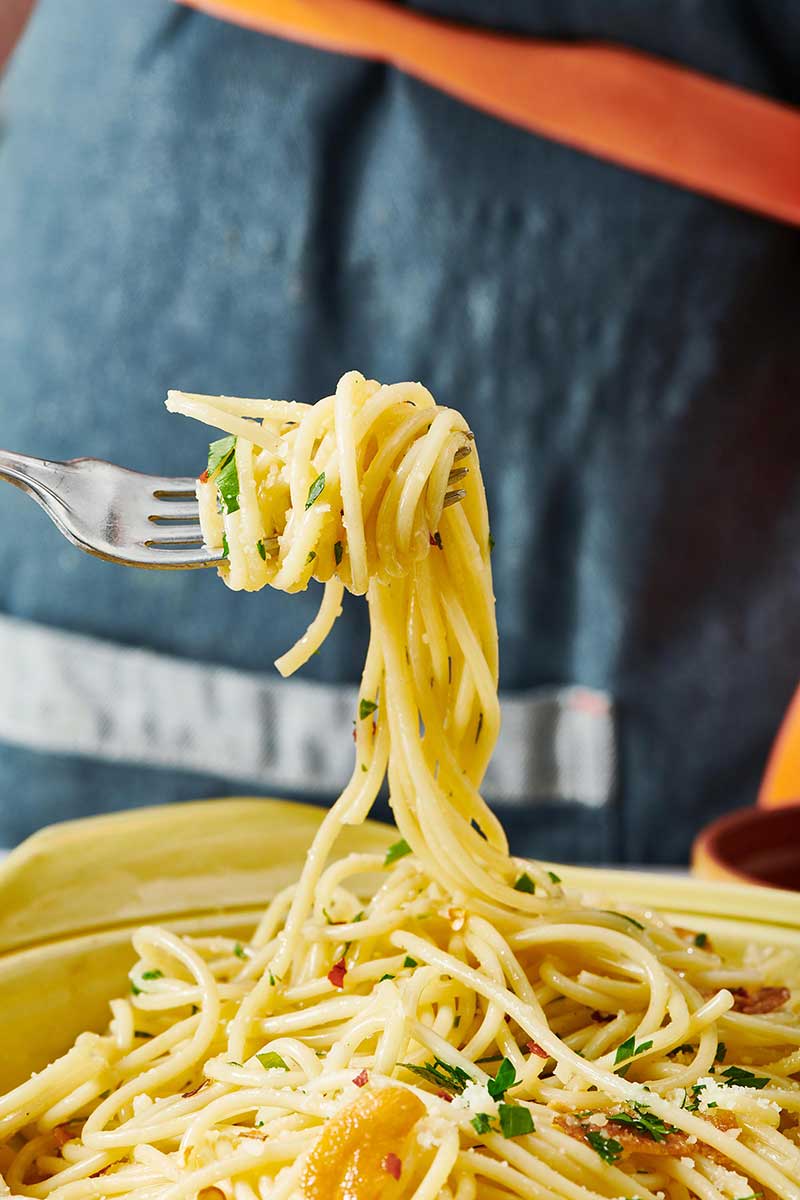
How to Cook Pasta: Simple tips and techniques for getting to perfect pasta every time.
Types of Pasta
Here are some of the most popular types of dried pasta, grouped into short and chunky shapes vs. longer strands. There are some sauce suggestions for the various types of pasta, but these are just suggestions — it’s all really a matter of personal preference. Some sauces are more traditionally used with skinny pasta, some more appropriate for short and chunky shapes, but mix and match as you like.
By signing up, you agree to our Privacy Policy.
Short and Chunky Pasta Shapes
In general, these are good with chunkier, heavier sauces and also very good for pasta salads and baked pasta dishes:
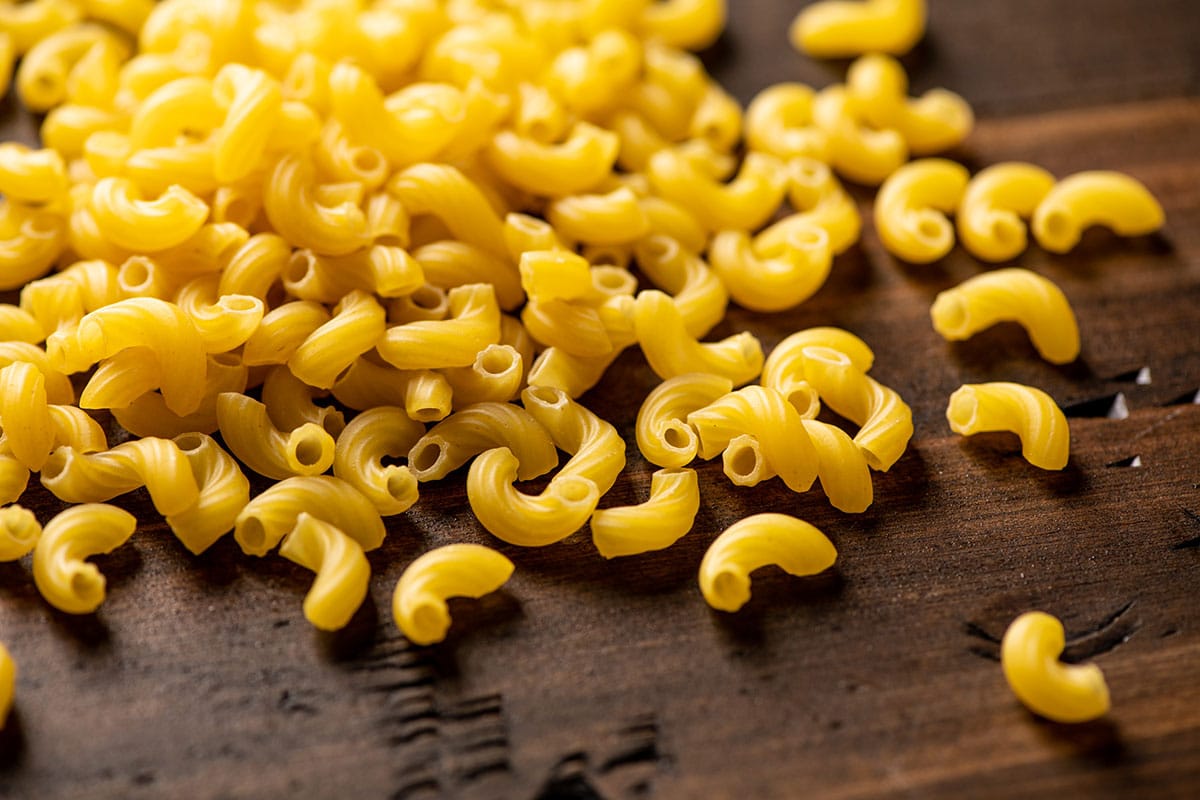
- Elbows – Small curved hollow tubes that are also called elbow macaroni. Sometimes macaroni has ridges; sometimes they are smooth.
- Rigatoni – A wide tubular pasta that may or may not have ridges (rigate).
- Ziti – A slightly smaller tube-shaped pasta cut straight across like rigatoni, which may or may not have ridges (rigate).
- Penne – Penne can also be rigate or smooth. Another tube-shaped pasta, this one diagonally cut on the edges.
- Cavatappi – These look like long corkscrew macaroni.
- Ditalini – Also called thumbles, the short, small tube pasta is great for soups and stews.
- Farfalle – This cut of pasta looks like little bowties. Great for chunkier sauces and pasta salads.
- Rotelle – These look like little wagon wheels and stand up to very chunky sauces as they have lots of crevices for veggies or meat to nestle.
- Orcheiette – The name means “little ears” in Italian, and these small cup-shaped pastas do have a resemblance!
- Orzo – Rice-shaped pasta, great for pasta salads and side dishes, as well as soups.
- Shells – These can come in various sizes, from small to large, and are usually stuffed and baked. Depending on their size, they will take between 10 and 18 minutes to cook. If you are stuffing and baking them with sauce, you might want to undercook them by a minute or two as they will continue to soften in the oven.
- Radiatore – These get their name because they are shaped like little radiators! They have lots of nooks and crannies to hold thick sauces.
- Rotini – These look like fat corkscrews.
- Gemelli – This spiral pasta is great for casseroles and also pasta salads.
Recipes With Chunky Pasta
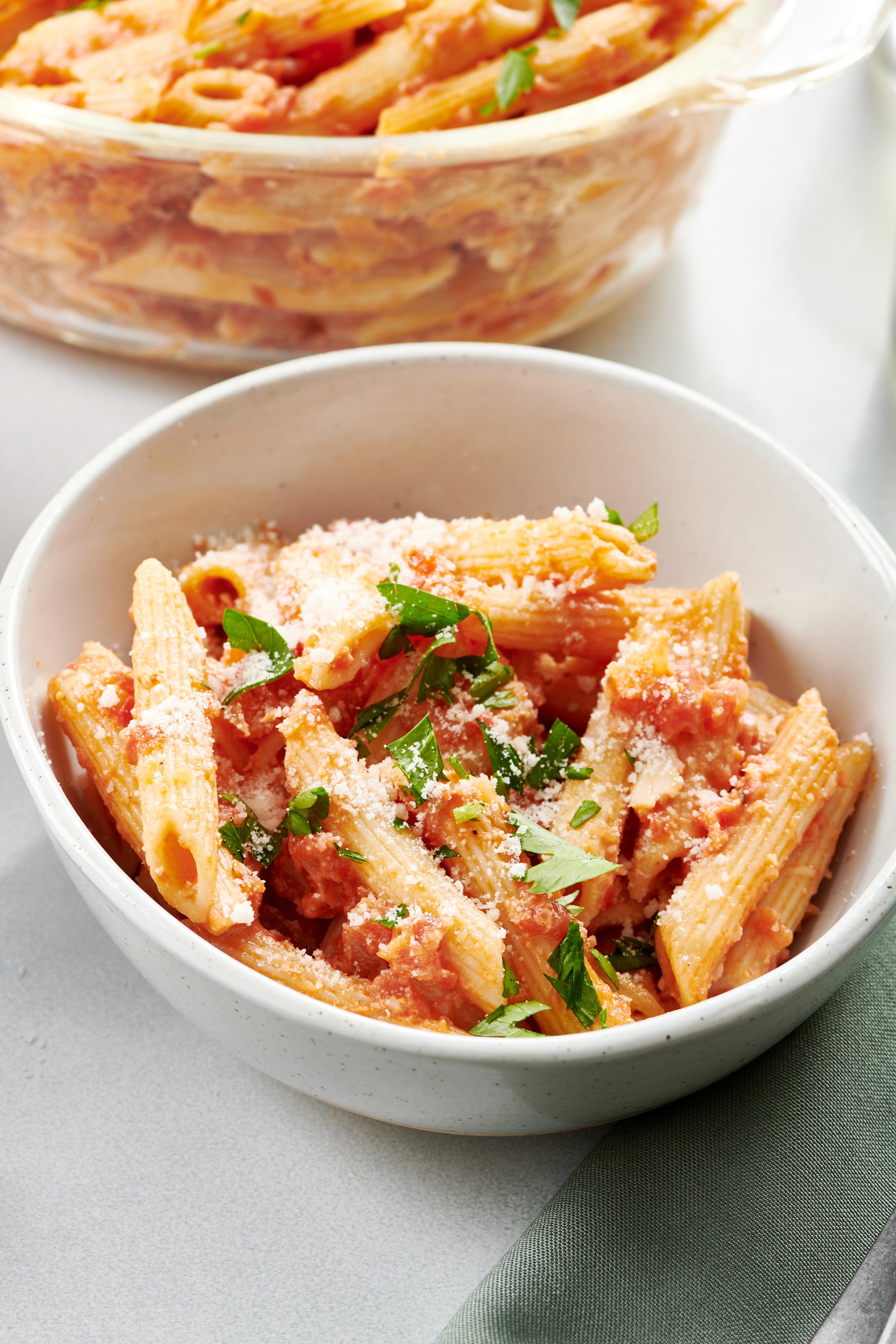
Long and Skinny Pastas
Depending on the thickness of the noodles, the long, skinny pasta shapes are good for sauces ranging from light to medium-bodied — but of course, they are also great with meatballs!
- Capellini or Angel Hair – Very delicate and thin; best used with very light sauces.
- Spaghetti – Pairs well with simple sauces that aren’t too chunky or heavy.
- Linguine – Long flat noodles that can go with medium to more full-bodied sauces.
- Fettucine – The name means “little ribbons.” This noodle is a bit thicker and wider than linguine and is often paired with heavier sauces, as well as cream-based ones.
- Fusilli – These loose corkscrew-shaped long strands of pasta are lots of fun to eat.
- Perciatelli or Bucatini – This pasta looks like fat pasta, but it actually has a hollow that runs down the length of the noodle, which can catch even more of your sauce.
- Spaghettini – A skinnier spaghetti, but not as thin as angel hair.
- Pappardelle – A large, flat noodle, like very wide fettuccine.
Recipes With Long Pastas
- Spaghetti and Meatballs with Tomato Sauce
- Fettucine Alfredo with Green Beans and Tapenade
- Linguine with White Clam Sauce
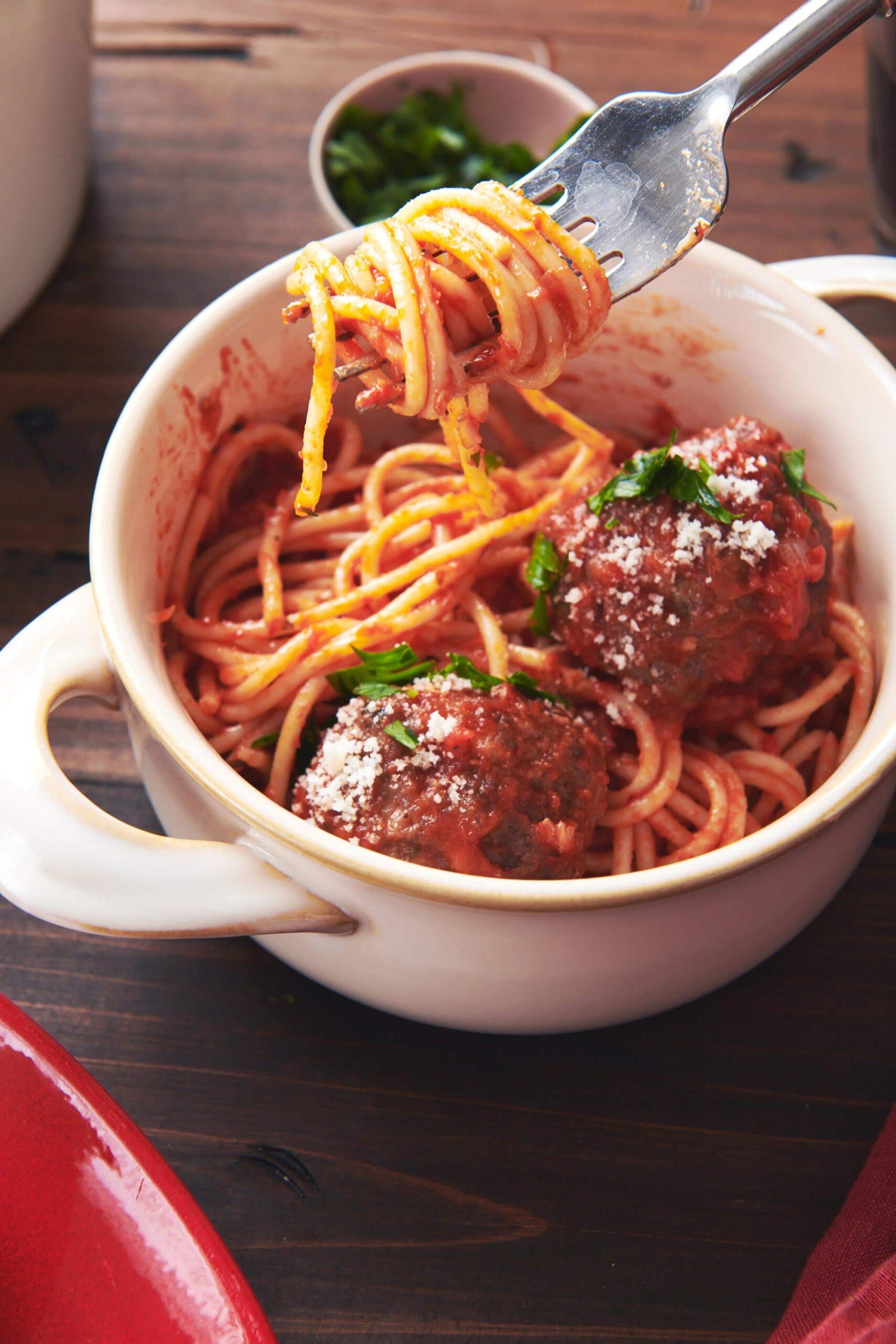
How to Break Spaghetti in Half
Some pasta recipes call for breaking the pasta in half because it is being added to a casserole like Turkey Tettrazini. Here’s how to break spaghetti in half (or use this technique for fettuccine, linguine, angel hair, or any other long, skinny pasta).
- Place the spaghetti in a clean dishtowel.
- Wrap the dishtowel around the pasta.
- Place the middle of the pasta against the edge of the counter.
- Press both ends of the spaghetti until the pasta breaks in the middle.
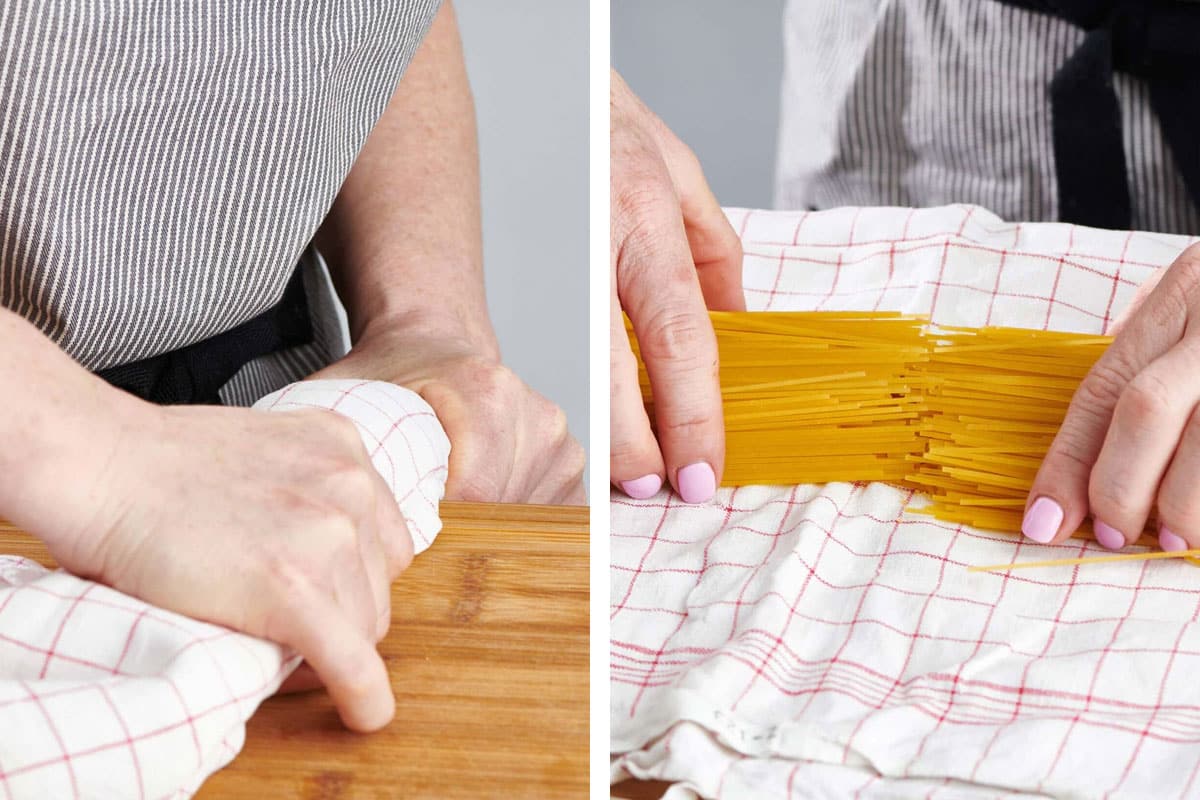
How Long to Cook Pasta
Some approximate cooking times are noted in the chart for each pasta type. These are just guidelines; different brands will call for different cooking times, and you should follow package instructions when available. However, if you tossed the package or bought your pasta in bulk, below are some cooking time ranges for you to start with. Test the pasta for doneness just before the shortest suggested cooking time, and see how much longer the pasta needs to boil to become tender or al dente.
Most dried pasta takes between 8 and 14 minutes to cook. Thicker pasta takes longer than thinner pasta, and very thin pasta cooks very quickly. Bronze-cut pasta usually takes longer than commercially made pasta, and whole wheat pasta may require a few extra minutes than regular pasta. Fresh pasta takes just a few minutes to cook through in general.
| Type of Pasta | Approximate Cooking Time |
|---|---|
| Capellini or Angel Hair | 3 to 5 minutes |
| Cavatappi | 11 to 14 minutes |
| Ditalini | 8 to 10 minutes |
| Elbow | 8 to 10 minutes |
| Farfalle | 12-15 minutes |
| Fettucine | 10 to 12 minutes |
| Fusilli | 11 to 13 minutes |
| Gemelli | 9 to 11 minutes |
| Linguine | 9 to 12 minutes |
| Orcheiette | 12 to 15 minutes |
| Orzo | 7 to 9 minutes |
| Pappardelle | 10 to 13 minutes |
| Penne | 11 to 14 minutes |
| Perciatelli or Bucatini | 11 to 14 minutes |
| Radiatore | 11 to 13 minutes |
| Rigatoni | 12 to 14 minutes |
| Rotelle | 11 to 14 minutes |
| Rotini | 10 to 12 minutes |
| Shells | 10 and 18 minutes |
| Spaghetti | 10 to 12 minutes |
| Spaghettini | 9 to 11 minutes |
| Ziti | 11 to 13 minutes |
9 Essential Pasta Cooking Tips
A few basic tips will help you cook any pasta perfectly every time!
1. Cook pasta in a large pot with a lot of water.
Aim for 6 quarts of water for every pound of pasta, and make sure your pot is large and deep enough to allow the water to continue to boil once the pasta has been added. Bring the pot of water to a full boil. Covering the pot with a lid speeds up the boiling time.
2. Salt the water generously.
Many chefs say that the cooking water should taste like the ocean; that’s how salty you should make pasta water. When the pasta cooks, it softens by absorbing the hot water, and only if the water is well-salted will the pasta have its best flavor. Otherwise, the only salt will be in the sauce, not the pasta itself.
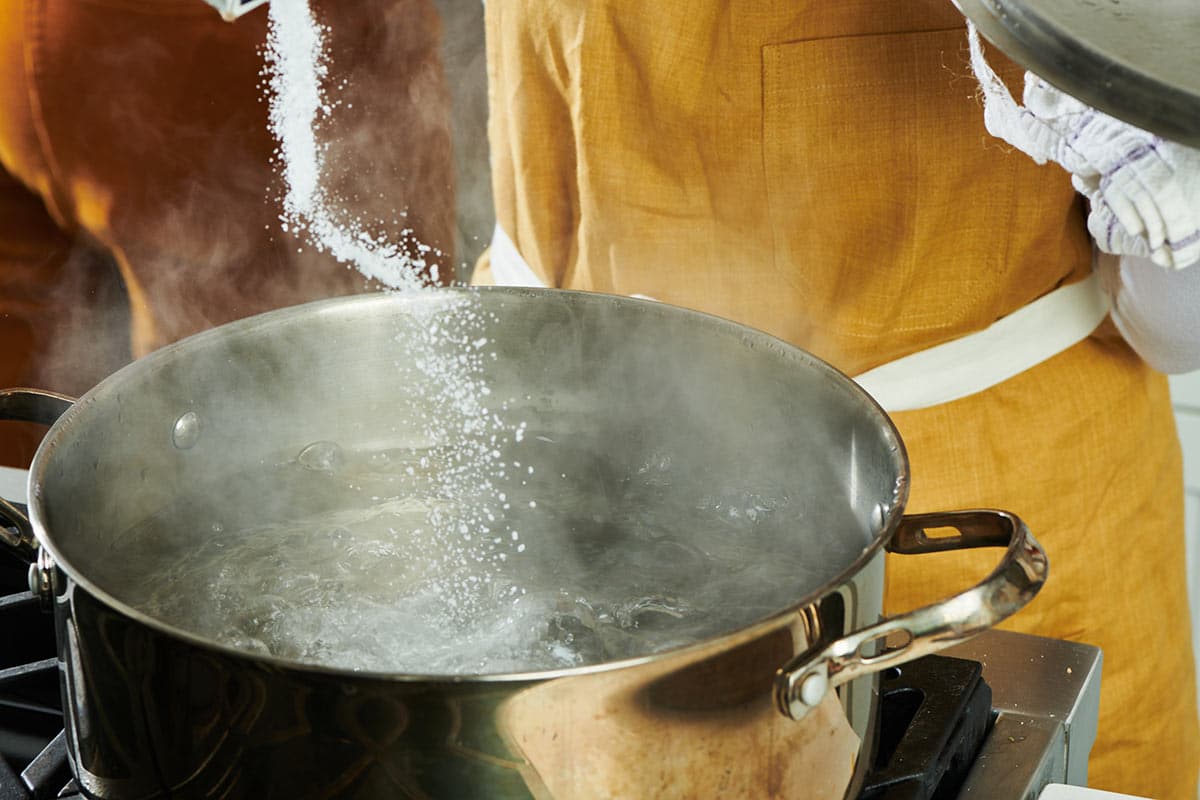
3. Stir the pasta frequently.
Only when the salted water is at a rolling boil should you add the pasta. Remember to stir the pasta often as it cooks to prevent sticking and clumping. Stir very often at the beginning of the cooking process. Allowing the hot water to circulate all over the pasta right from the get-go will prevent it from sticking to itself.
Kitchen Smarts
You need to stir the pasta immediately after adding it to the boiling water, or it might start to clump together.
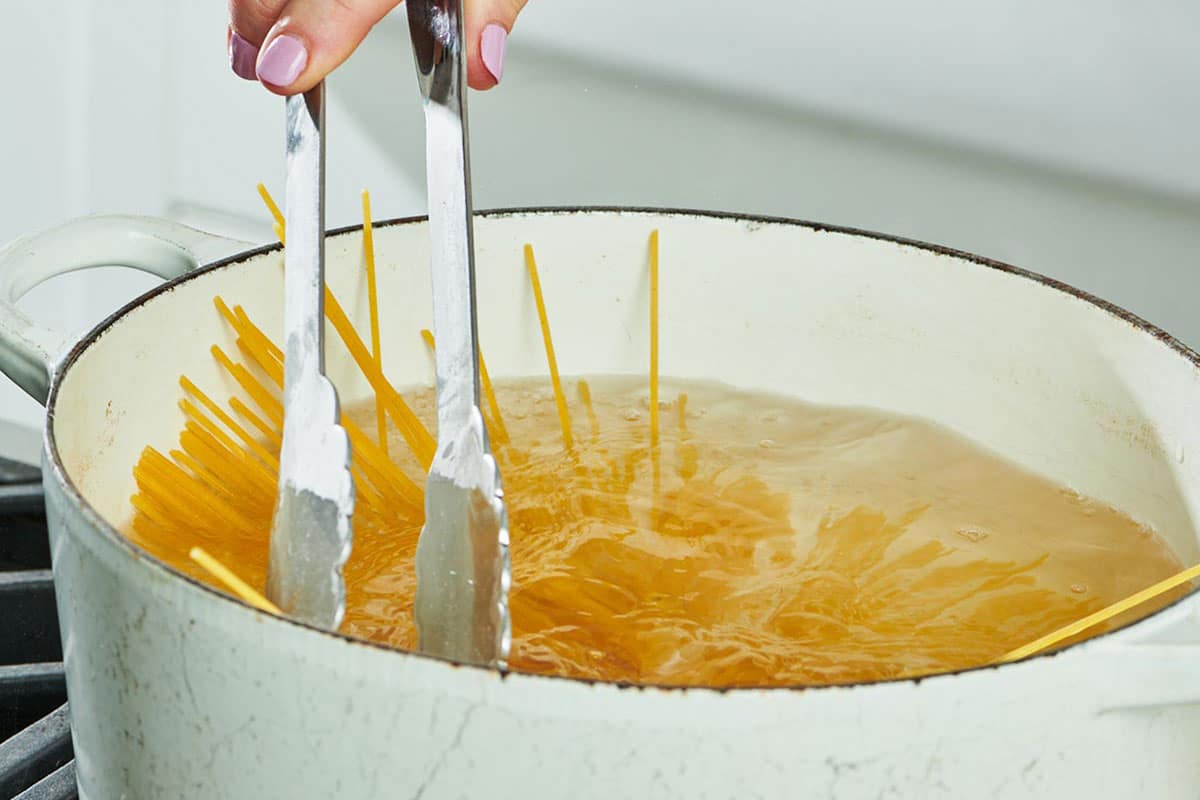
4. Don’t rinse pasta after cooking it.
When draining the pasta in a colander, only rinse cooked pasta if the recipe specifically directs you to do so. Rinsing pasta removes the starch, which adds flavor to the pasta and encourages the sauce to adhere to it. The only time I rinse pasta is when I am using it for cold pasta salad, as the starch might make the salad gummy. I like to just do a quick rinse of the pasta in cool water. If you skip the rinsing, the pasta will stick together as it cools and possibly overcooks in its own heat.
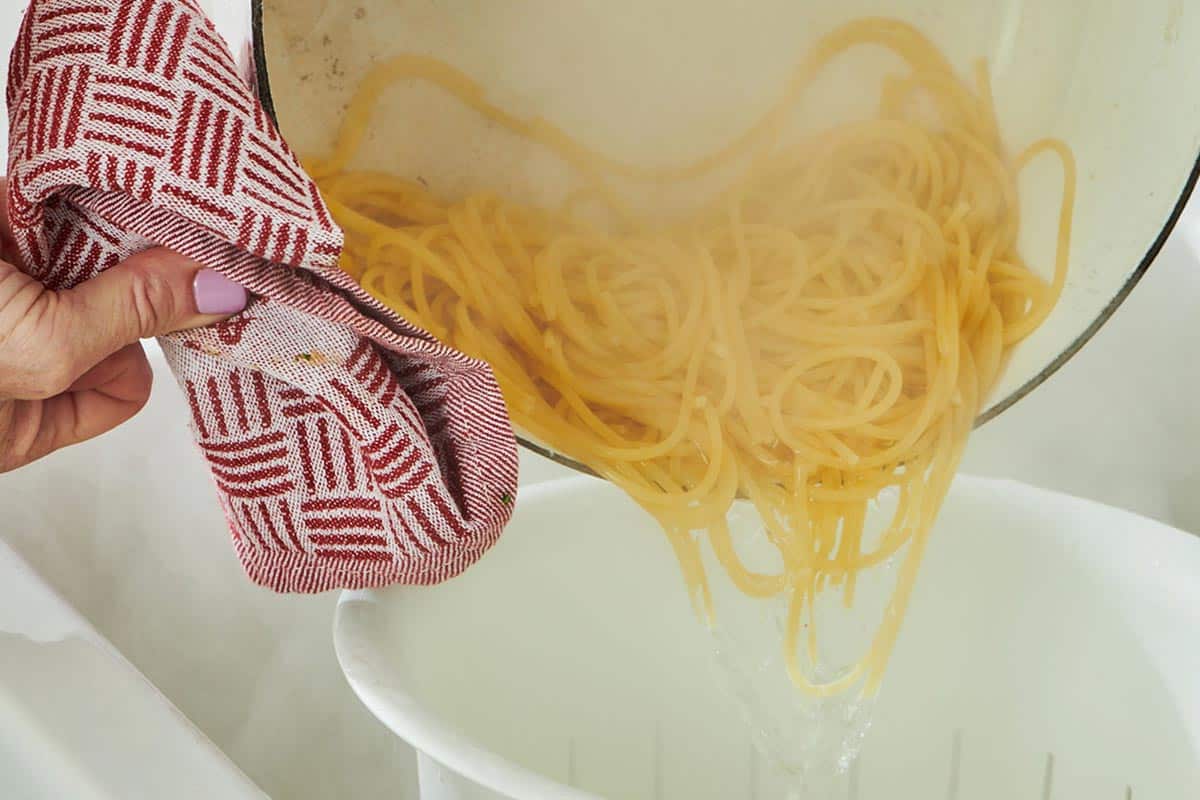
5. Reserve some of the pasta cooking water.
This is one of the simplest and most effective ways to up your pasta game, and every Italian cook knows it! The pasta cooking water is salted, and once the pasta is cooked, the water contains a nice amount of flavor and starch from the noodles. Adding some pasta cooking water to the sauce will help thin it out a bit, and allows the sauce to nicely coat the pasta. And, the starch in the cooking water enables the sauce to adhere to the pasta better.

6. Never add olive oil to the pasta cooking water.
Somewhere along the line, it became popular belief that this was an old Italian grandma cooking secret, but in fact, it defeats the purpose of bringing the starch out and putting it to work. Also, never add olive oil to the cooked pasta before you add the sauce unless the recipe is for an olive oil-based sauce. The olive oil will prevent the sauce from sticking to the pasta.
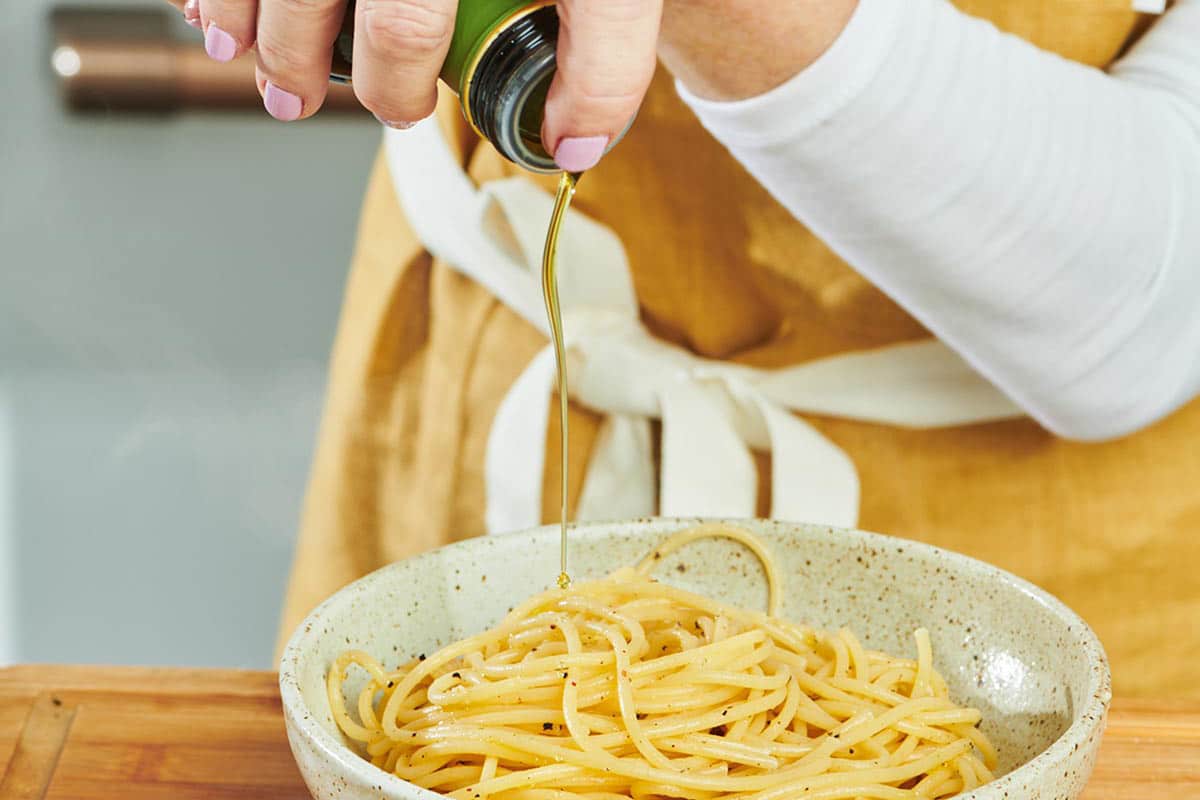
7. Drain the pasta as soon as it’s al dente.
Al dente means “to the tooth” in Italian and refers to the fact that the pasta still has a bit of chew and texture, and hasn’t become too soft or overcooked. Don’t let it cook to a mushy stage. It should be drained when it is just cooked and still a bit firm in the center (bite into a pice of pasta to check!). The noodles will continue to cook for a few minutes after they are drained, and if you add the cooked pasta to the sauce to finish cooking, make sure to account for that extra cooking time. Taste the pasta towards the end of the suggested cooking time (check package directions) and drain it when it is *just* done to your liking.
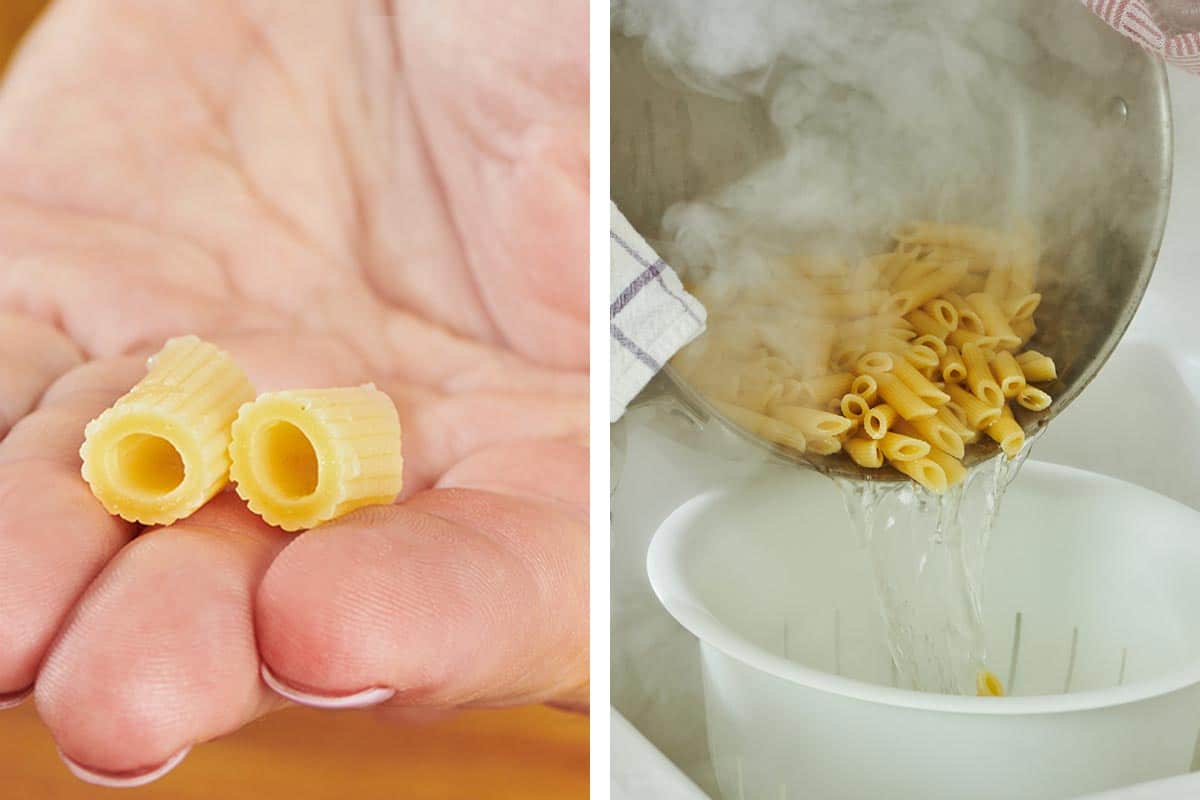
8. Finish the pasta in the sauce.
Many recipes benefit from adding the just barely al dente pasta to the sauce and finishing cooking the pasta in the sauce. Drain the pasta just before it’s done to your liking. You can combine the pasta with the sauce in the pan you cooked the sauce in, or if it is not big enough, you can return the pasta to the big pot after draining, pour in the sauce, toss, and finish cooking the pasta with the sauce. This will allow the pasta to absorb some of the flavors of the sauce better than if you just tossed the two together at the end.
9. Sauce pasta while it’s hot.
However you sauce the pasta, do it while the pasta is hot. The hotter the pasta, the better it will absorb the sauce. Don’t oversauce — you want to taste your perfectly cooked pasta!
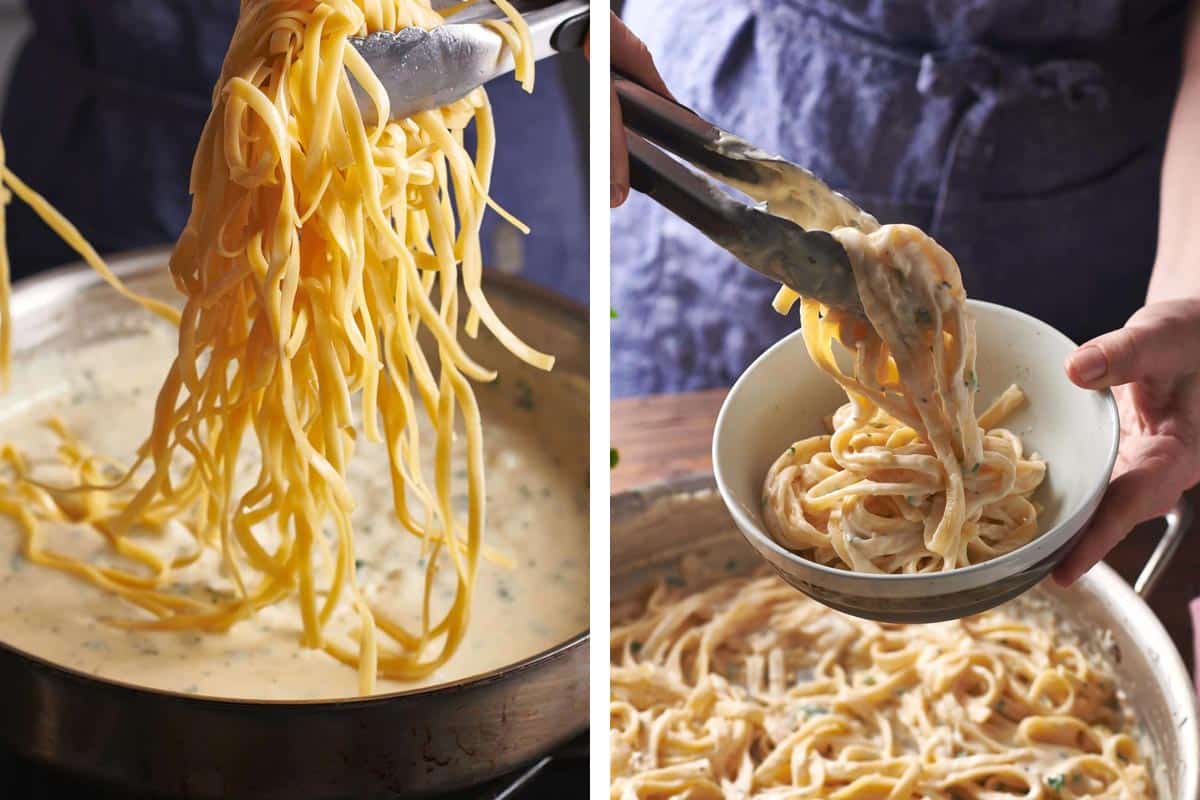
Cooking Pasta for Baked Pastas
If you are planning to use your pasta in a baked pasta dish after cooking it, make sure to stop when it is just al dente, or even a bit before, if your baked pasta dish has a generous amount of sauce in it. This will allow the pasta to heat through in the casserole without overcooking and also absorb some of the sauce as it all bakes.
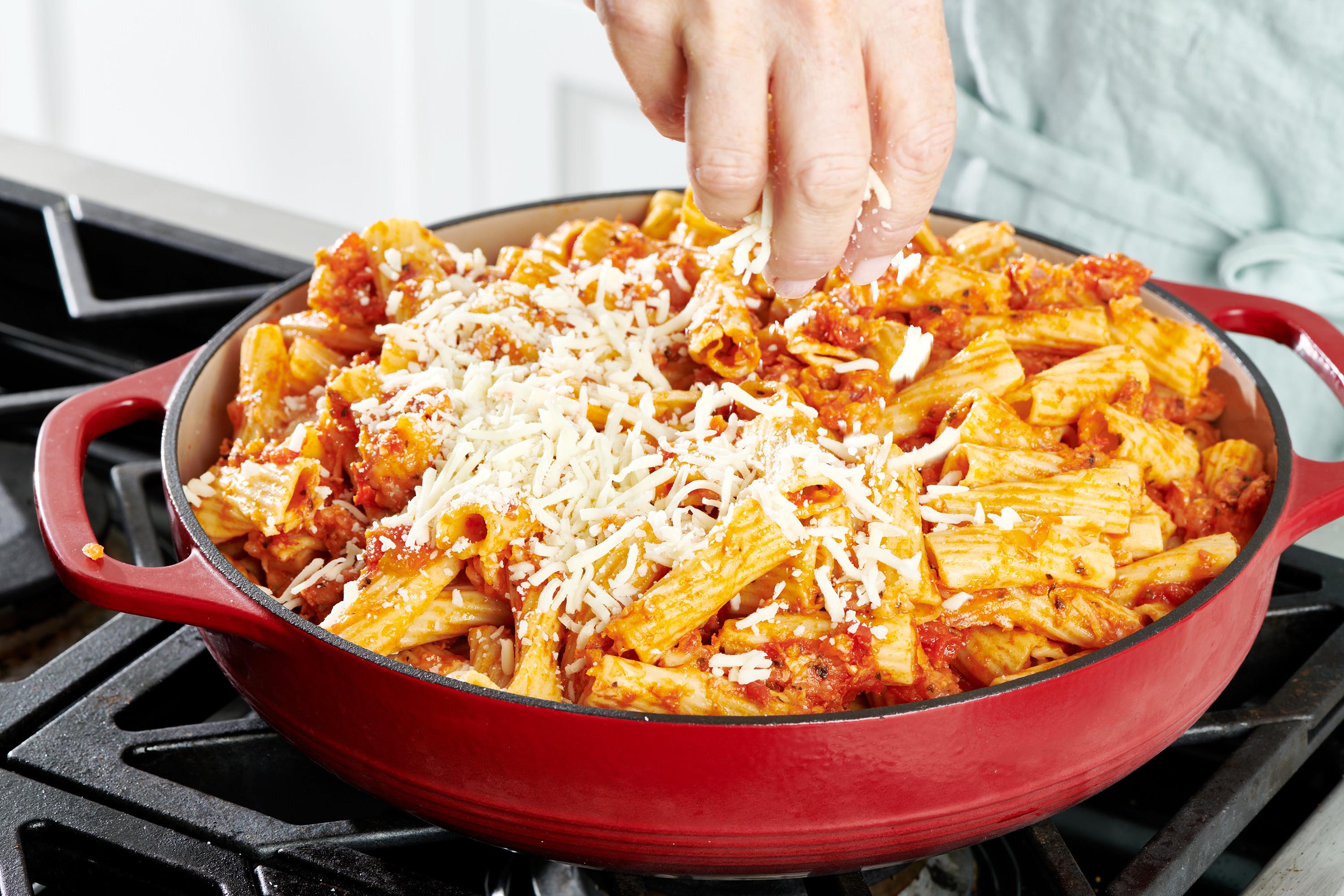
Cooking Pasta for Pasta Salads
In short, cook the pasta all the way through, salt the pasta cooking water, and give it a quick rinse after cooking to stop the cooking and remove excess starch. Also, add some of the dressing just after you give it a quick rinse and before the pasta is fully cooled.
FAQs
For a main course serving, I like to plan on 3 to 4 ounces of dried pasta per person. Often, the package will offer nutritional info for a 2- or 3-ounce amount, but I think that is more likely to be the right portion for a first course or a side dish. Also, I live with hungry people, so I like to be realistic! (And even with bigger portions, my family might have seconds — better to be prepared).
Dried pasta usually lasts for at least a couple of months past the expiration date printed on the package. The flavor may be a bit muted, but it’s still safe to eat. If there are eggs in your dried pasta, however, the pasta may start to taste a bit off, so don’t go too far beyond the expiration date.
Cooked pasta can last for up to 5 days in the refrigerator in a tightly sealed container. This is true of pasta that has not been sauced or pasta that has been sauced with a simple sauce without super perishable ingredients like seafood or fish.
Rigate is Italian for ridges. And those ridges are what allow the pasta to grab onto that sauce and hold it tight. Tighter than a preschooler hangs on to his mom who is about to leave him at school for the first time, or maybe even a month or so into the school year, even though he knows she is coming back because when has she ever not? (Can you tell I still have scars?)
Delicious Pasta Recipes to Try
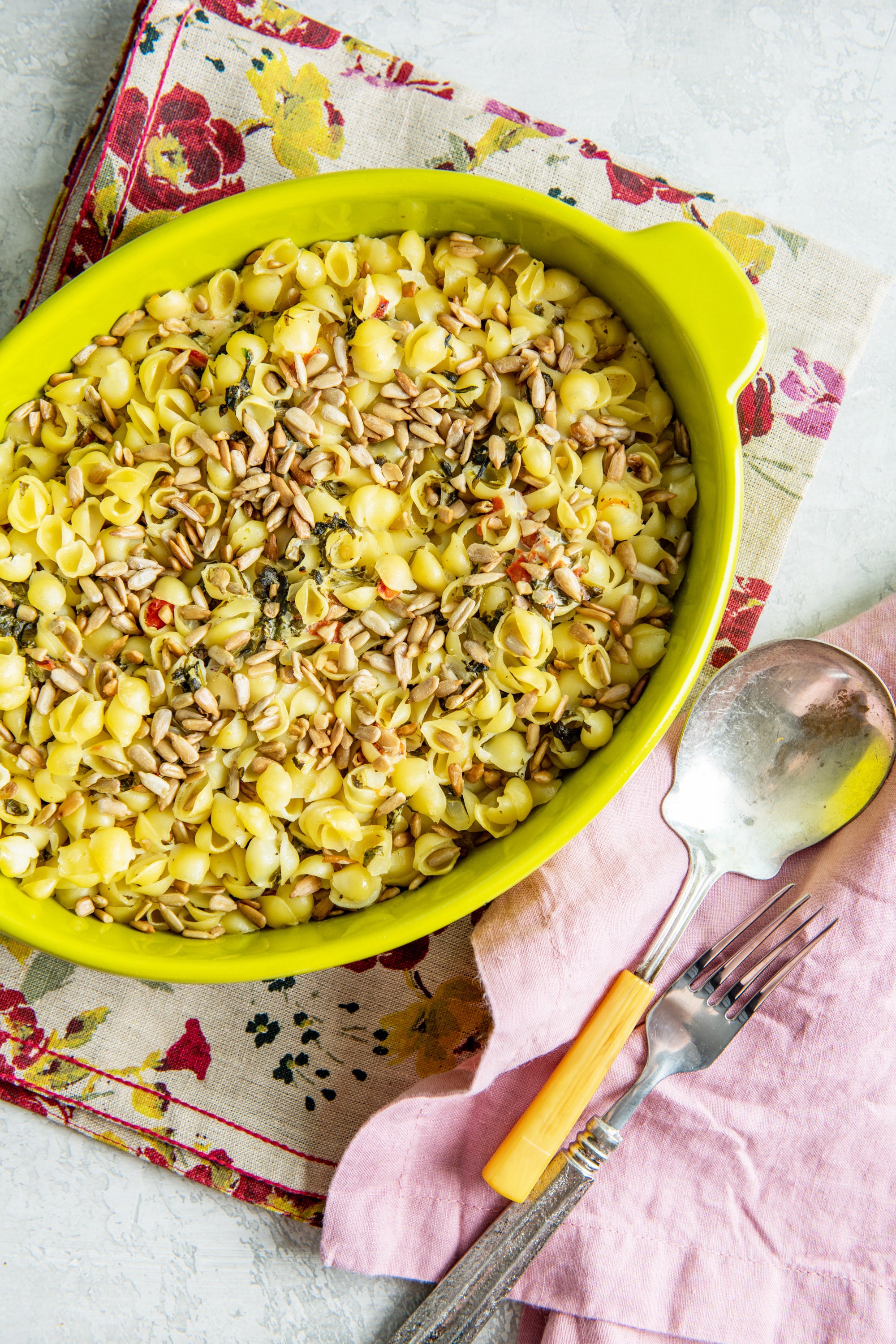
What to Serve With Pasta
I almost always serve my pasta dishes with some sort of salad, and sometimes a simple cooked vegetable as well. Here are a few of my go-to salad pairings for pasta:
Pin this now to find it later
Pin It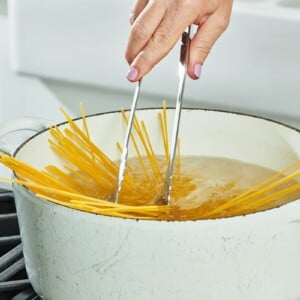
How to Cook Pasta
Video
Ingredients
- 6 quarts water
- 2 to 3 tablespoons kosher salt
- 1 pound dried pasta
Instructions
- Bring the water to a boil in a large pot over high heat.
- Add the salt, and then allow the water to return to a boil.
- Add the pasta and stir immediately. Cook, stirring frequently, until the pasta is al dente or cooked to your liking, following the suggested times on the package. A super skinny pasta like angel hair might take 4 minutes, and a chunky thick pasta like radiatore might take 13 or so minutes.
- Drain the pasta in a colander and use it according to your recipe or sauce as desired.
Notes
- Obviously, different sizes, shapes, and thicknesses of pasta will take different amounts of time, with thicker pasta taking longer. It will also differ from brand to brand. Also, know that bronze-cut pasta (pasta that has been extruded using uncoated bronze dies) will take longer to cook than most commercially produced pasta.
- Aim for 6 quarts of water for every pound of pasta, and make sure your pot is large and deep enough to allow the water to boil with the pasta cooking. Salt the water generously.
- Remember to stir the pasta often as it cooks to prevent sticking and clumping. Stir very often at the beginning of the cooking process. Allowing the hot water to circulate all over the pasta right from the get-go will prevent it from sticking to itself.
- Only rinse cooked pasta if the recipe specifically directs you to do so. Rinsing pasta removes the starch, which adds flavor to the pasta and also encourages the sauce to adhere to it. The only time I rinse pasta is when I am using it for pasta salad, as the starch might make the salad gummy; without rinsing it, the pasta will stick together as it cools and possibly overcook in its own heat.
- Reserve some of the pasta cooking water. The pasta cooking water is salted, and once the pasta is cooked, the water has a nice amount of flavor and starch in it from the noodles. Adding some pasta cooking water to the pasta sauce will help thin it out a bit, and coat the pasta with the sauce.
- Don’t add olive oil to the cooking water or to the pasta after it is cooked. Adding it to the water defeats the purpose of bringing the starch out and putting it to work. Adding olive oil to the cooked pasta before you add a sauce will prevent the sauce from sticking to the pasta (unless, of course, your sauce is olive oil-based, then absolutely do!).
- Drain the pasta as soon as it’s done to your liking. Don’t let it cook to a mushy stage. It should be drained when it is just cooked and still a bit firm in the center. The noodles will continue to cook for a few minutes after they are drained, and if you add them to the sauce to finish cooking, you want to make sure to allow for that extra cooking time.
- Many recipes benefit from adding the just barely al dente pasta to the sauce and finishing cooking the pasta in the sauce. This will allow the pasta to absorb some of the flavors of the sauce better than if you just tossed the two together at the end.
- However you sauce the pasta, do it while the pasta is hot. The hotter the pasta, the better it will absorb the sauce.
- Don’t oversauce — you want to taste your perfectly cooked pasta!
